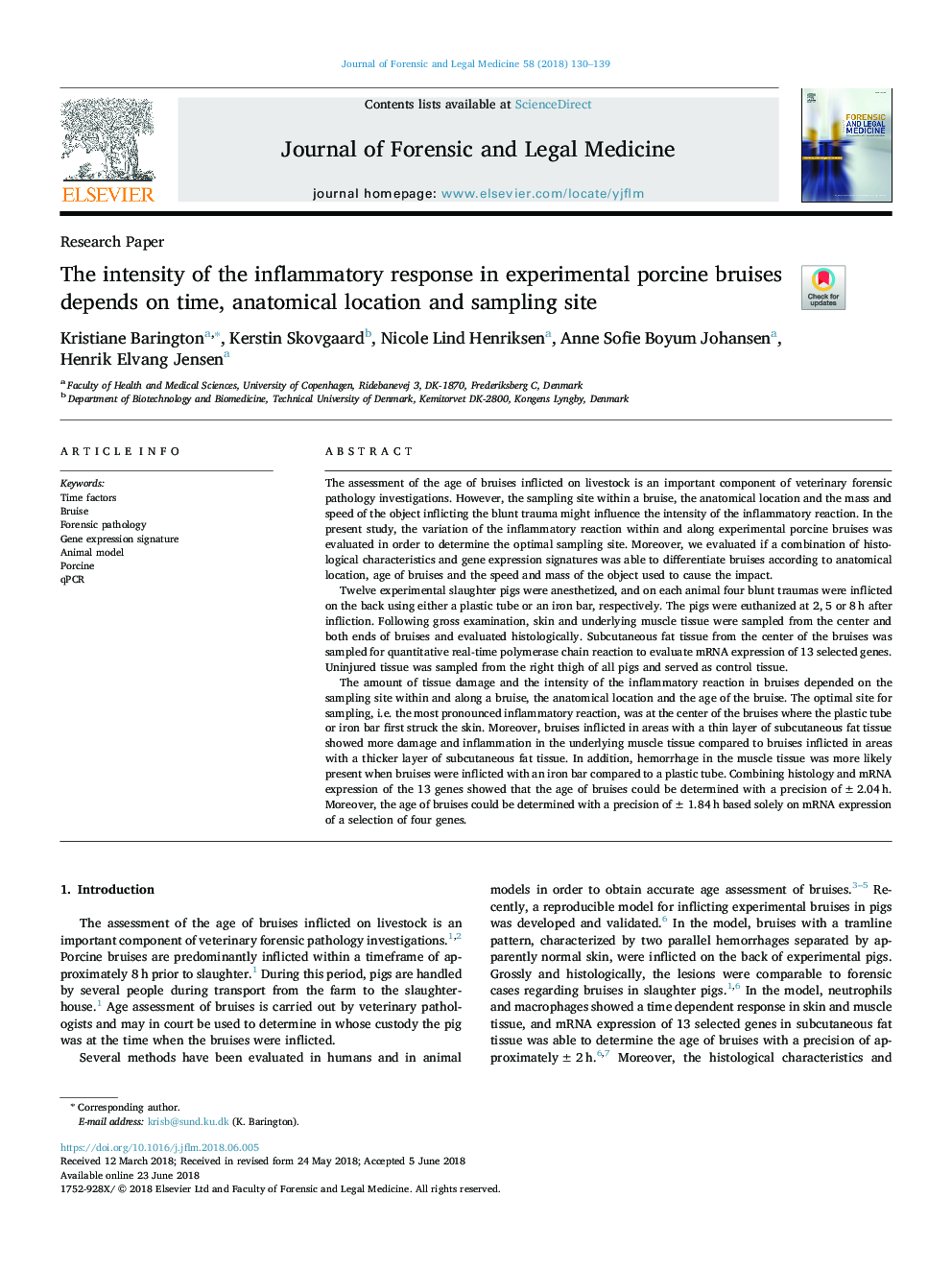| Article ID | Journal | Published Year | Pages | File Type |
|---|---|---|---|---|
| 6554916 | Journal of Forensic and Legal Medicine | 2018 | 10 Pages |
Abstract
The amount of tissue damage and the intensity of the inflammatory reaction in bruises depended on the sampling site within and along a bruise, the anatomical location and the age of the bruise. The optimal site for sampling, i.e. the most pronounced inflammatory reaction, was at the center of the bruises where the plastic tube or iron bar first struck the skin. Moreover, bruises inflicted in areas with a thin layer of subcutaneous fat tissue showed more damage and inflammation in the underlying muscle tissue compared to bruises inflicted in areas with a thicker layer of subcutaneous fat tissue. In addition, hemorrhage in the muscle tissue was more likely present when bruises were inflicted with an iron bar compared to a plastic tube. Combining histology and mRNA expression of the 13 genes showed that the age of bruises could be determined with a precision of ±2.04â¯h. Moreover, the age of bruises could be determined with a precision of ±1.84â¯h based solely on mRNA expression of a selection of four genes.
Related Topics
Life Sciences
Biochemistry, Genetics and Molecular Biology
Genetics
Authors
Kristiane Barington, Kerstin Skovgaard, Nicole Lind Henriksen, Anne Sofie Boyum Johansen, Henrik Elvang Jensen,
